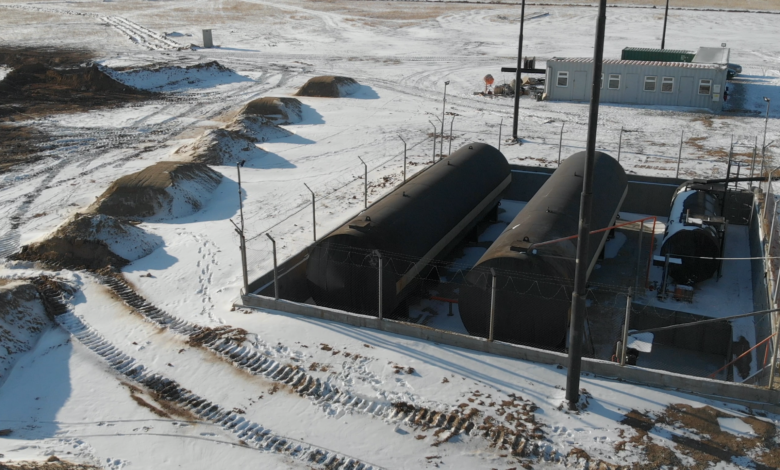
Outdated and unsustainable technologies are still widely used in mining, with the sector still facing high levels of scrutiny and criticism over its social and environmental performance. Yet the emergence of new technologies and innovation brings hope for the future of the industry – creating shared benefits for mining companies, the consumers who depend on their commodities, and our planet.. It is becoming increasingly hard for mining companies to achieve reduced operational costs and increased productivity levels as operations go further under the ground.
I stand by a view that advanced technologies and artificial intelligence (AI) are the ultimate solutions which, when integrated effectively in the mining sector, will enhance mining operations from exploration to extraction – enabling companies to complete tasks efficiently, make accurate decisions, and improve overall business and sustainability outcomes.
Mining is beginning to reap the benefits of modern technologies and adoption of AI
Mining is a complex sector that is constantly fluctuating – confronted with uncertainty on long-standing matters such as resource prices and unpredictable mining fields, as well as new trade and travel challenges resulting from the COVID-19 pandemic. Yet increasingly, mining organizations across the globe are coming to appreciate the benefits of incorporating modern technologies and AI in their mining operations as a way to navigate such challenges, foster resilience and secure future competitiveness.
Controlling mineral exploration costs, overseeing construction and operational projects to their completion, all whilst maintaining profitability can be a real challenge. As a result, mining companies are looking to technology to increase production through resource planning, boosting machinery reliability through predictive and condition-based monitoring technologies, delivering clear and precise financial and operational reporting, and providing actionable intel via real-time data obtained from different parts of an organization.
I would like to point to a few interesting examples of successful AI and technology integration that I’ve come across. For example, BHP has begun using smart caps to log their truck drivers’ brainwaves and measure their fatigue levels. The company also uses AI to automate decision-making, with their sophisticated system selecting which crusher trucks are suitable for certain ores. Vale is another company using AI to increase the lifespan of haul tires, effectively minimising waste and saving the company millions. Another interesting example is Goldcorp’s partnership with IBM, which has enabled them to use smart technologies in drilling report analysis, surveying geological data, and identifying high-value areas to explore.
Securing a sustainable future for the mining sector
The benefits of digital tools within the mining sector go beyond operational efficiency, productivity and profitability. It is evident that technology and AI are increasing the sector’s environmental performance and helping safeguard workers also. When it comes to transportation and excavation, technology and AI have enabled the development and use of autonomous vehicles and drillers, reducing fuel consumption by a significant margin. With reduced energy requirements, the operational environmental footprint is also minimised.
Additionally, it is necessary to highlight that AI and technology are making mining safer. Through AI, the Internet of Things, and sensors, companies are able to level up safety standards through monitoring and maintaining their equipment before breakdowns happen. The sensors are used to monitor speed, vibration, and temperature, which can transform preventive maintenance to predictive maintenance. As such, technology and AI is capable of reducing the exposure of miners to dangerous situations by improving decision-making and changing the mining process from machine-oriented to people-oriented.
Advantages of In-Situ Recovery
I have long been interested and involved in the mining sector, and several years ago decided to invest in nickel and cobalt mining through KAZNICKEL LLP – a company that has since evolved into Battery Metals Technologies (BMT). Based in Kazakhstan, BMT is using in-situ recovery (ISR) technology to mine cobalt and nickel – metals which are facing increasing demand due to their indispensable role in everyday items (such as laptops, phones, among others) as well as their contribution to green energy technologies such as wind turbines, bioenergy plants and electric vehicles.
However, the challenge lies in the remote location of these metals compounded with other pertinent issues of limited infrastructure, energy shortages, and lack of skilled workforce. The ISR method involves extracting minerals without removing the rock in which they are found in the ground, instead of recovering the minerals from rocks by dissolving them and pumping the solution to the surface where the minerals can be recovered. As a result, it is more environmentally friendly, flexible, easily scalable, and with low-cost implications. The ISR approach reduces reliance on conventional mining techniques such as drilling, blasting, and crushing, which are uneconomical, unviable and destructive to our environment, and reduces the need for mine site remediation and rehabilitation.
Today, the implementation of advanced technologies and AI is crucial to ensure a more sustainable and secure future for mining, an industry that is critical for the functioning of our modern-day society. Its vital role puts pressure on this industry to not only adhere to sustainability guidelines but also play a vital role in bringing about positive change.
To quote environmentalist Robert Swan, OBE: “The greatest threat to our planet is the belief that someone else will save it”, which couldn’t be more relevant in this case. Whilst we have seen clear and successful examples of digital innovation in the mining sector, Boston Consultancy Group’s Digitial Acceleration Index (DAI) reports that the metals and mining sector is between 30-40% less digitally mature than comparable industries – illustrating the work that still needs to be done to increase adoption levels. We need the mining industry to have effective and efficient operations, and this requires greater uptake and more widespread use of the technology advancements at our disposal.



